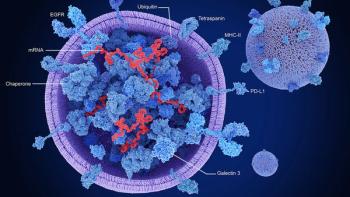
New FDA Guidance Utilizes Real-World Data and AI for Postmarket CGT Surveillance
Key Takeaways
- Postapproval monitoring of CGTs is essential due to their long-lasting effects and limited trial participants, enhancing understanding of long-term outcomes.
- Real-world data and evidence are crucial for postapproval activities, despite challenges like fragmented data and inadequate medical coding.
This new draft guidance mandates efficient, long-term CGT postapproval monitoring using real-world evidence, registries, and decentralized models, all critical for biopharma.
In tandem with its September 2025 release of a
Because CGT products have the potential for long-lasting effects, and the clinical trials supporting their approval typically involve a limited number of participants, postapproval monitoring is essential. Collecting this additional postapproval efficacy and safety data enhances the understanding of long-term outcomes, guides the safe clinical use of CGTs, and informs future regulatory decisions (2). These attributes are particularly relevant given that observational studies often need to be long-term, potentially lasting 15 years or more, especially for treatments administered to pediatric patients who must be followed into adulthood, according to FDA (2). To address these challenges, the guidance focuses on leveraging modern data infrastructure to balance premarket and postmarket data collection.
What are the benefits of leveraging real-world data and evidence for monitoring?
A key element of this guidance is the extensive discussion it contains on utilizing real-world data (RWD) sources to derive real-world evidence (RWE). For sponsors, especially those with small patient pools that are common in CGT development, maximizing the utility of existing data is vital. While administrative medical claims, vital statistics, and electronic health records are not primarily designed for product evaluation, they can be utilized if sponsors account for constraints, such as fragmented data—often caused by healthcare provider switching—and inadequate medical coding terminology.
Despite these limitations, FDA explains in its draft guidance that RWD sources can be applied to key postapproval activities, including assessing rates of clinical outcomes, determining background rates of adverse outcomes (e.g., cardiovascular complications or malignancies), and observing CGT outcomes across multiple patient populations (2). Significantly for technical professionals, the guidance notes that RWD can be used for training artificial intelligence (AI) and natural language processing (NLP) machine-learning models to develop computable phenotypes for safety or effectiveness outcomes. This integration of advanced data processing techniques underscores a commitment to rigorous data quality and necessitates that sponsors establish robust data governance structures to ensure the integrity and confidentiality of RWD.
How can data collection be optimized through registries and decentralization?
The guidance highlights registries as organized systems that collect standardized, curated, longitudinal clinical data over time, which offers distinct advantages over less structured data sources such as medical claims databases (2). Registries are particularly relevant for postapproval surveillance of CGTs and support the assessment of long-term durability of response, monitoring of growth and developmental milestones in pediatric recipients, and surveillance for malignancies (2,3). When using registries, FDA emphasizes in the guidance that sponsors must be mindful of recruitment challenges to ensure the registry remains representative of the target patient population.
The guidance additionally advocates for using decentralized models for data collection, similar to those used in decentralized clinical trials. This approach involves conducting study-related activities outside the traditional clinical site, thereby improving generalizability, optimizing efficiency, and enhancing patient convenience and retention. Because treatment with CGTs often requires many years of follow-up, reducing the burden of travel by utilizing local healthcare professionals, facilities, and telemedicine visits is essential for ensuring high completion rates in long-term follow-up studies. Ultimately, these methods aim to facilitate necessary long-term data collection without creating undue logistical challenges for patients receiving potentially life-altering treatments.
References
1. FDA.
2. FDA.
3. Abou-El-Enein, M.; Grainger, D. W.; Kili, S. Registry Contributions to Strengthen Cell and Gene Therapeutic Evidence. Mol. Ther. 2018, 26 (5), 1172–1176. DOI:
Newsletter
Stay at the forefront of biopharmaceutical innovation—subscribe to BioPharm International for expert insights on drug development, manufacturing, compliance, and more.





